No products in the cart.
Solanum maglia
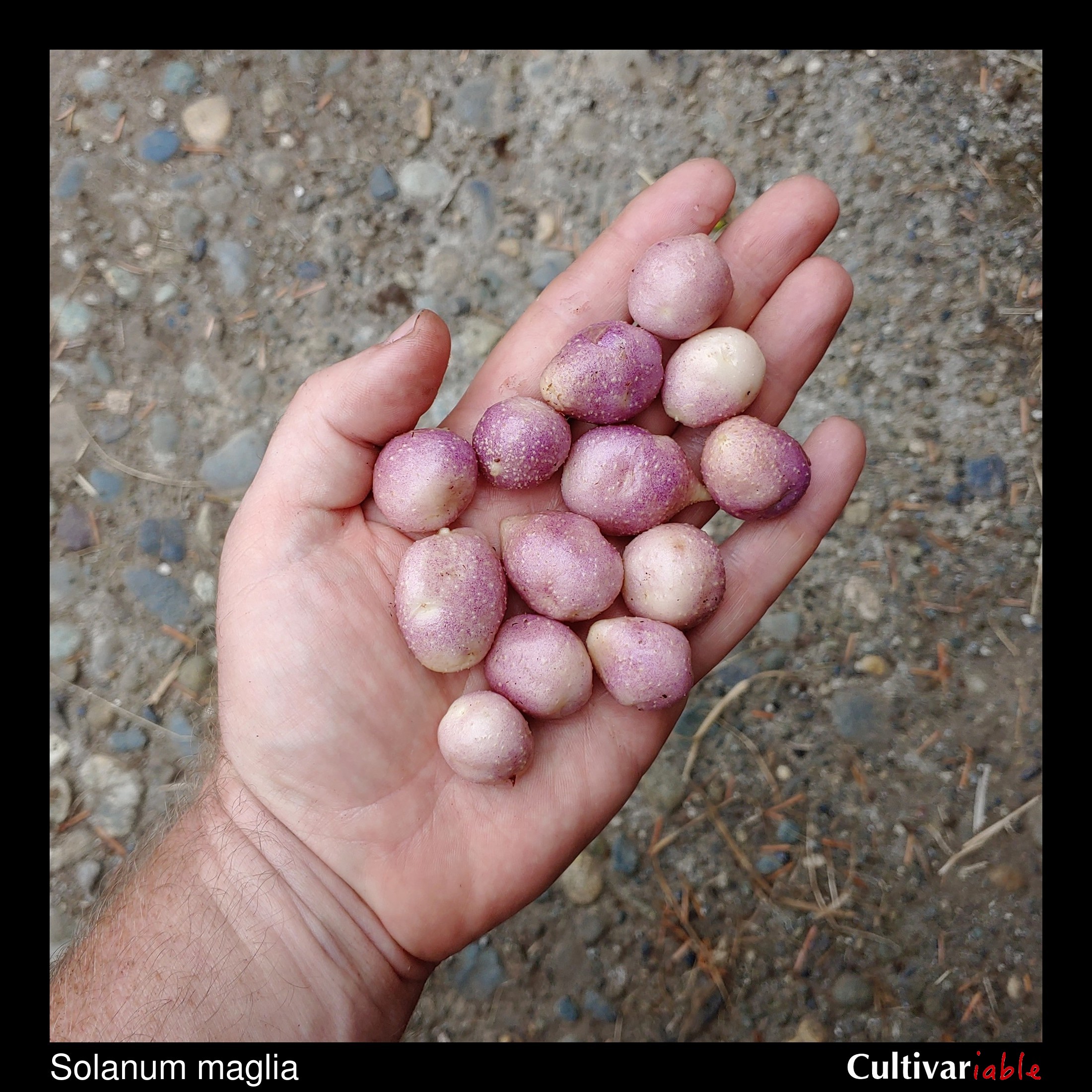
| Common Names | Papa cimarrona, Darwin’s potato, Alhue-poñü, Papa del Alma |
| Code | mag, mgl |
| Synonyms | |
| Clade | Unknown |
| Series | Maglia |
| Ploidy | Diploid (2x), Triploid (3x) |
| EBN | 2 |
| Tuberization Photoperiod | Long Day |
| Self-compatibility | Yes |
| Nuclear Genome | A |
| Cytoplasmic Genome | A |
| Citation | Schlectendal: Hort. Hal. 1: 6. 1841. |
Description
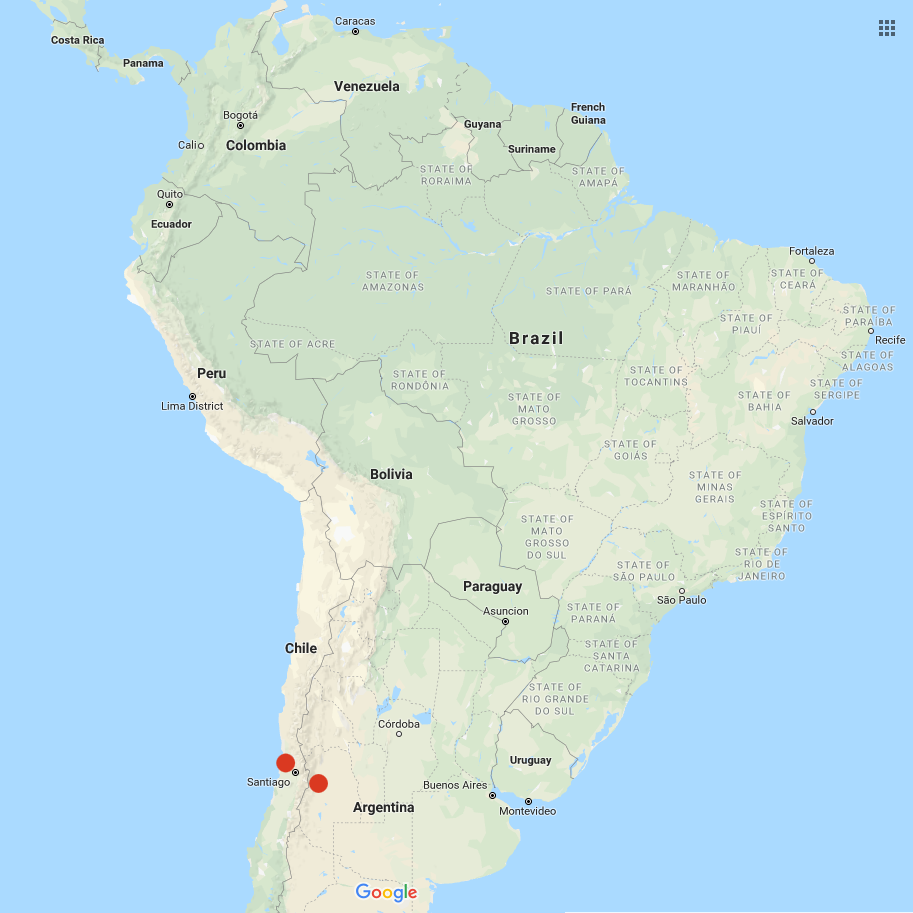
Solanum maglia is a South American species, found primarily in Chile, but also in one location in Argentina. It is a low-elevation, primarily coastal species. It is the only wild potato that has a significant distribution in Chile. According to Brucher (1990), S. maglia was the first wild potato species to be described. It is sometimes known as Darwin’s Potato, but it isn’t clear if Darwin ever saw this species, as there has been confusion between this species and Chilean S. tuberosum varieties. Luther Burbank wrote about results from crosses between this species and S. tuberosum that aren’t consistent with what we would now expect. The other common name for this species, papa cimarrona, is also applied to the yam species Discorea brachybotrya.
The specific epithet, maglia, is a Latinization of the native name for this species. While there is no completely standardized pronunciation for scientific names, the most common way to pronounce this species is probably so-LAY-num MAG-lee-uh.
Plants reach about 30 inches tall. Tubers are formed terminally on stolons about 18 inches long. Tubers are small, reaching about and inch and a half at most. Mature tubers are light purple in color. Flowers are small and white and do not appear to produce pollen, although there are reports that S. maglia has been used as a male parent, so it must produce some. The leaves of early growth tend to be simple, large and broad. Later growth has more leaflets.
S. maglia might have been used as a food plant in the past and possibly even currently by the Araucarian natives of Chile. Unfortunately, the evidence for this is not particularly clear. It is possible that Chilotanum type potatoes have been mistaken for S. maglia. The relatively high level of glycoalkaloids in this species should cast some doubt.
Unfortunately, S. maglia appears to have little genetic diversity remaining. There are few populations in the wild and most are triploid. As is usually the case, the triploids are effectively sterile. The triploids were presumably the result of the successful combination of a 2n and 1n gamete, which is normally a low probability event. It is interesting that the triploids would become more common than the diploids, given the greater reproductive flexibility of the diploids. Volkov (2003) suggests that S. maglia may have originated as an allotriploid by the combination of S. microdontum and S. acaule or a closely related species. It isn’t clear how this idea accounts for the presence of diploid populations.
Spooner (2012) evaluated S. maglia to determine whether it might be a progenitor of the Chilotanum group of potatoes and declared the evidence inconclusive. Genetically, it groups with Chilotanum potatoes, so it probably has played at least a small role in the evolution of Chilotanum.
Spooner also noted that the allelic diversity of the tested accessions probably indicated self-compatibility. After several years of experimenting with isolated plants, I have found that they produce very little pollen, but do occasionally produce a few berries. The seeds that I have grown from those berries produced plants very similar to the parent, although typically with both larger foliage and somewhat larger tubers. The progeny are much more fertile than the original clone. Seedlings grown from the progeny remain similar in phenotype and do not display any obvious domesticated traits. It is my opinion that S. maglia does have limited self-compatibility. This will soon be tested, as I sent some of the likelier progeny out for genotyping in 2023.
It seems worthwhile to continue investigating the self-compatibility of this species, both because it would be more convenient to propagate by seed and because it might offer another source of self-compatibility genetics (along with the Sli gene found in S. chacoense) for domesticated diploid breeding. Hybrids with domesticated diploids have so far been both male and female fertile.
Weinheimer (1966) found that S. maglia was a particularly effective rootstock for forcing flower production in the variety Russet Burbank. It produced more flowers and berries than other rootstocks tested.
S. maglia has A type cytoplasm (Hosaka 1986), which I find extremely interesting considering that it is otherwise found only in domesticated potatoes. Even though they are geographically discontiguous, that would seem to suggest that S. maglia either once had a range that overlapped with andigena potatoes or resulted from an early cross with a wild species after andigena potatoes were introduced to lowland Chile. The nuclear genome of S. maglia has not been reported, but based on its behavior in crosses with domesticated diploids, and the fact that it groups closely with Chilotanum potatoes, I don’t see how it could be anything but a member of the A genome.
There are several companies offering seeds of this species for sale. I have grown out the seeds from two sellers and got plants that appeared to be Solanum nigrum, which is not a species of potato. Buyer beware. S. maglia might be self compatible, but getting a quantity of seed from it sufficient for sale would be quite difficult, in my experience. Most seed produced on S. maglia is likely to be outcrossed with a domesticated potato or other wild species, unless it is grown in isolation.
Resistances
It is interesting that, while domesticated Chilean potatoes are often resistant to late blight, S. maglia has no significant resistance. Given the similar humid, coastal climate, I would have guessed that S. maglia would be under the same selective pressure as the domesticated potatoes grown further south in Chiloe, but, in my experience, it is extremely vulnerable to late blight.
| Condition | Type | Level of Resistance | Source |
|---|---|---|---|
| Globodera pallida (Pale Cyst Nematode) | Invertebrate | Not resistant | Bachmann-Pfabe 2019 |
| Phytophthora infestans (Late Blight) | Fungus | Not resistant | Bachmann-Pfabe 2019 |
| Potato Virus A (PVA) | Virus | Moderate, Not resistant | Webb 1961, Valkonen (1997) |
| Potato Virus V (PVV) | Virus | High | Valkonen (1997) |
| Potato Virus X (PVX) | Virus | Moderate | Webb 1961 |
| Potato Virus Y (PVY) | Virus | Not resistant | Valkonen (1997) |
Glykoalkaloid content
S. maglia contains solanine and chaconine, just as do common domesticated potatoes. Distl (2009) found a level of 144 mg/100g for this species, which puts it far outside the safe zone for edibility. Johns (1990) listed a level of 56mg/100g, but the accession tested was later reclassified as S. tuberosum. I have tasted tubers of this species and found them bitter, as expected. Hybrids with domesticated diploids are sometimes also bitter, although less so than S. maglia.
Photos
Solanum maglia
Solanum maglia x Domesticated Diploid Hybrids
Cultivation
Solanum maglia grows along the Chilean coast, where the climate is cool and foggy, but not necessarily high in precipitation. Accounts about the drought tolerance of this species vary. It grows well with drip irrigation.
Even the diploid collections of this species are poor pollen producers (Brucher 1990), so seed production may be difficult.
Accessions Evaluated
The following accessions were examined to prepare this profile. I have evaluated 2/2 accessions currently available from the US Potato Genebank.
PI 245087
Valparaiso, Chile, 1958.
Tissue culture plantlet (clone). Diploid. Tubers to two inches, light blue/purple. Bitter. Reasonably fertile with hand pollination. Seedlings grown successfully. Extremely vulnerable to late blight. Collected on steep slopes above the ocean and known locally as “Papa Sylvestre.” The collection notes describe tubers to four inches in diameter, which is substantially larger than I have been able to obtain.
PI 558316
Valparaiso, Chile, 1990.
Tissue culture plantlet (clone). Triploid. Tubers to about an inch, light blue/purple. Bitter. Profoundly infertile – no berries obtained with hand pollination. Extremely vulnerable to late blight.
Breeding
It isn’t clear how much this species has been used in breeding. There are quite a few papers from the 1920s and earlier that mention crosses between the domesticated potato and S. maglia, but it appears that S. maglia was commonly confused with Chilean domesticated potatoes and other species. Modern varieties that are reported to include S. maglia in their pedigrees (usually distantly, through a S. demissum x S. maglia hybrid called Reddick 229) include Ashworth (Hougas 1956), Compbell 12, Caribe, Cascade, Centennial Russet, Crystal, Dakchip, Sunrise (Plaisted 1989), and Itasca (Love 1999). Was Reddick 229 really a S. maglia hybrid? I wouldn’t bet on it. It was reported to result from a cross of S. demissum x S. maglia, which strikes me as a pretty difficult cross due both to the poor pollen production of S. maglia and the large gap in ploidy between the two species.
It seems like S. maglia might be useful for breeding with domesticated diploids because the plants are large with heavy foliage and the tuberization is day neutral. It might be possible to produce larger, earlier, higher yielding diploid potatoes by crossing the two. S. maglia has unfortunately high glycoalkaloids, but domesticated diploids tend to have very low concentrations, so it should be possible to select some that are palatable. Of course, it is easy to imagine progeny from crosses that have only the desirable traits. It is possible that S. maglia may bring too much wild potato “baggage” to be practical.
Crosses with S. tuberosum
I have found it pretty easy to cross domesticated diploids to S. maglia. Most crosses result in berries with 10 to 20 seeds. The seeds have germinated at 80% or better. Unfortunately, many of the seedlings have lacked vigor and died before forming true leaves. It seems that a lot of the seedlings may suffer from hybrid necrosis. So far, first generation crosses have been at least female fertile and one has been male fertile as well.
Sutton (1909) described making hundreds of crosses of S. tuberosum to S. maglia before obtaining a single hybrid. Presumably the S. tuberosum pollinator was tetraploid in this case.
Luther Burbank (1915) crossed a plant that he described as S. maglia with S. tuberosum, producing a plant he described as a “pomato,” which produced large tomato-like edible fruits. His description is not consistent with S. maglia and may have just been Chilean S. tuberosum.
| Female | Male | Berry Set | Seed Set | Germination | Ploidy | Source |
| S. maglia |
S. tuberosum (2x) |
Moderate | Low | High | 2x | My observations |
| S. maglia | S. tuberosum (4x?) |
Very low | Very low | Yes | Sutton 1898 |
Crosses with other species
The cultivar Craig’s Bounty, developed in the 1940s includes a S. maglia x S. demissum cross in its pedigree.
| Female | Male | Berry Set | Seed Set | Germination | Ploidy | Source |
| S. maglia | S. kurtzianum | Low | Low | Ispizua 1999 | ||
| S. kurtzianum | S. maglia | Low | Low | Ispizua 1999 | ||
| S. demissum |
S. maglia 3x? | Yes | Yes | Yes |
References
3 thoughts on “Solanum maglia”
Comments are closed.


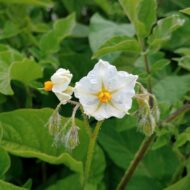
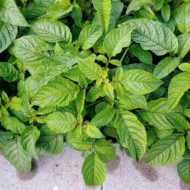

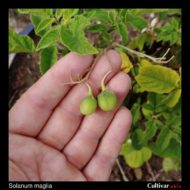
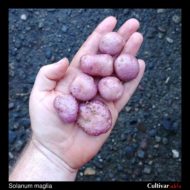
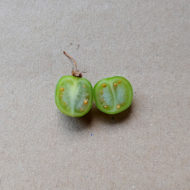
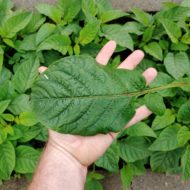
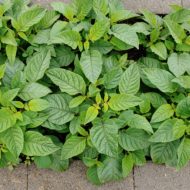
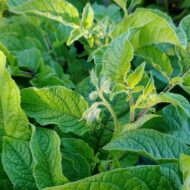
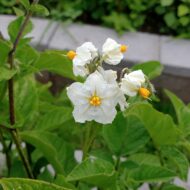

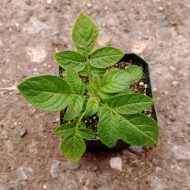
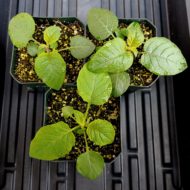
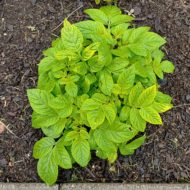
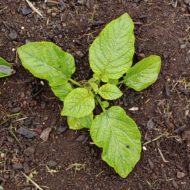
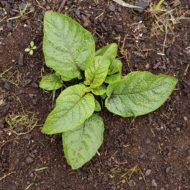
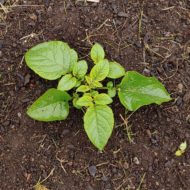
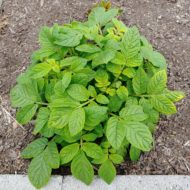
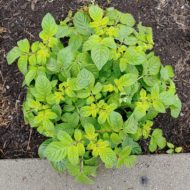
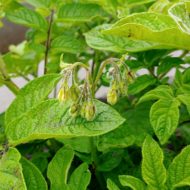
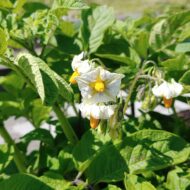
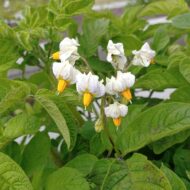
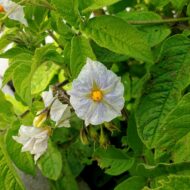
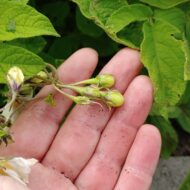

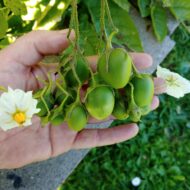
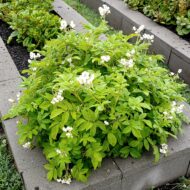

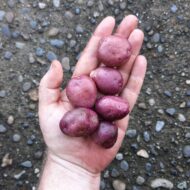
Are there any tricks to getting S. maglia to break dormancy? Beautiful tubers, practically flawless but no shoots. Any ideas would be great. PS All the seed and tubers I’ve purchased from you have been great.
The last batch was harvested in May, so they should be ready to come out of dormancy soon. If you can pot them in a warm spot, that should help to speed things along.
Thanks as usual I’m suffering from a lack of patience. Good to know that’s it. The tubers are in perfect condition.